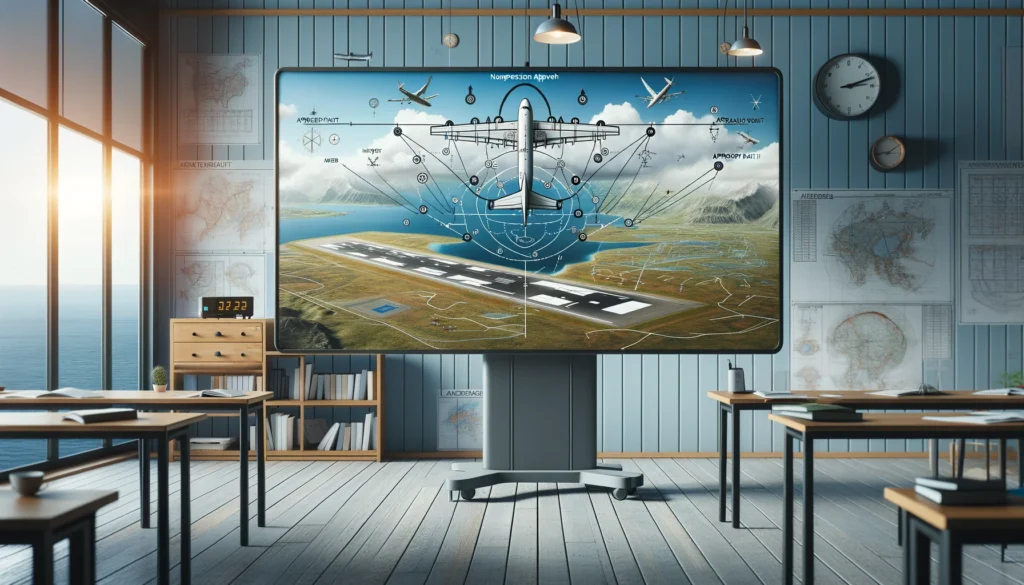The missed approach point (MAP) is aviation’s central element, maintaining safety and flight efficiency, mainly during the descent and landing phases. Also called a specific point at which a pilot needs to decide whether to continue the landing or execute a missed approach, the MAP is an essential factor for all pilots.
Understanding Missed Approach Point Jeppesen

Jeppesen, the pioneer of aeronautical navigation, produces detailed charts that enable pilots to identify missed approach points precisely. These charts contain necessary information like the exact location of the MAP, altitude constraints, and the required navigational maneuvers if the approach is aborted. Pilots heavily use charts to understand the landing environment and can make a split-second decision if they need to abort the approach.
Navigating Non-Precision Approaches: Missed Approach Point Non Precision
Non-precision approach procedures are widely used worldwide, especially at smaller or less equipped airports. In such circumstances, if available, the MAP is generally located from a final approach fix (FAF) time or using the Distance Measuring Equipment (DME). This drawback can be seen in the absence of vertical guidance, which forces pilots to rely on altitude and visual references more so that they don’t descend below normal levels before reaching the MAP.
Locating the Missed Approach Point “Where is the Missed Approach Point”

The precise position of the missed approach point may show massive diversity, due to the approach type and available technology. For instance, in the ILS (Instrument Landing System) approach, the MAP could be at the Decision Altitude (DA), where the runway must be in sight for the landing to continue. Furthermore, In the VOR approach, the MAP shows the VOR signal aligns with a specific radial at a certain distance. Pilots must be fully aware of these details. That is specific to each airport and each runway.
What is the Missed Approach Point in a Nonprecision Approach

In non-precision approaches, the MAP is determined by interpreting more generalized navigational aids that do not provide precise vertical guidance. That usually entails a combination of altimeter settings, DME readings, and timing from a known navigational fix. In another instance, the MAP is specified when a pilot gets to a certain altitude and a specific distance from the runway as determined by DME. If the runway environment is not visible by this time, the pilot must perform a missed approach.
The Role of Technology in Identifying Missed Approach Points
Moreover, due to technical developments, identifying missed approach points is much more accurate and doesn’t require the pilot’s interpretation. GPS technology, in particular, has changed this aspect by giving the exact coordinates on the MAP that can be automatically programmed into an aircraft’s flight management system (FMS). It lessens workload and improves the precision of the missed approach procedures.
Training and Procedures for Handling Missed Approaches

Training for missed approaches is an important part of a pilot’s training. The simulated misses technique trains pilots to deal with all potential missed approach situations and trains quick decision-making. In addition, regular training updates must be done to ensure the aviators are updated on the latest technology and procedures that affect different aircraft and unique operational situations.
Regulatory Considerations and Safety Protocols
Aviation regulatory bodies, including the FAA (Federal Aviation Administration) and EASA (European Union Aviation Safety Agency), have mandated in-depth procedures for implementing missed approaches. With these rules in place, all pilots should know what makes the missed approach procedure necessary and when it should be implemented rather than at the expense of the landing.
Moreover, The missed approach point is a crucial element of flight safety, and the procedures’ theoretical knowledge and strict following need to be understood entirely. Suppose a pilot follows outdated non-precision methods or utilizes the most cutting-edge GPS equipment. In that case, they must be proficient in identifying and reacting to the wind MAP. This competency, coupled with regular training and compliance with regulatory rules, guarantees that aviation is one of the safest means of transportation.

